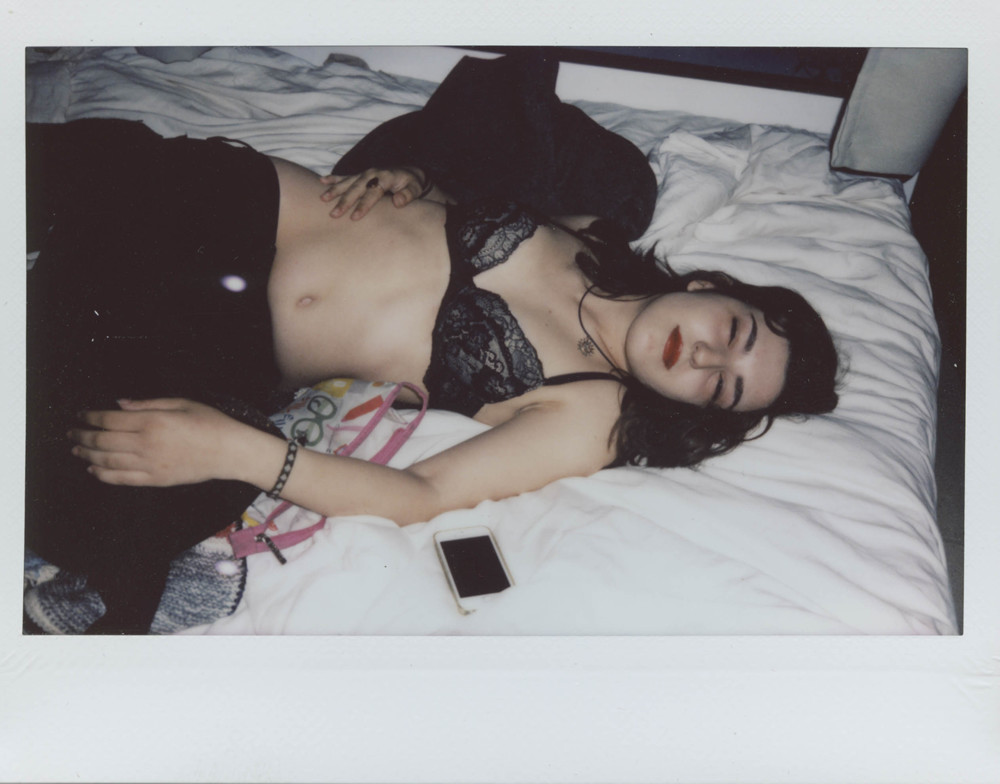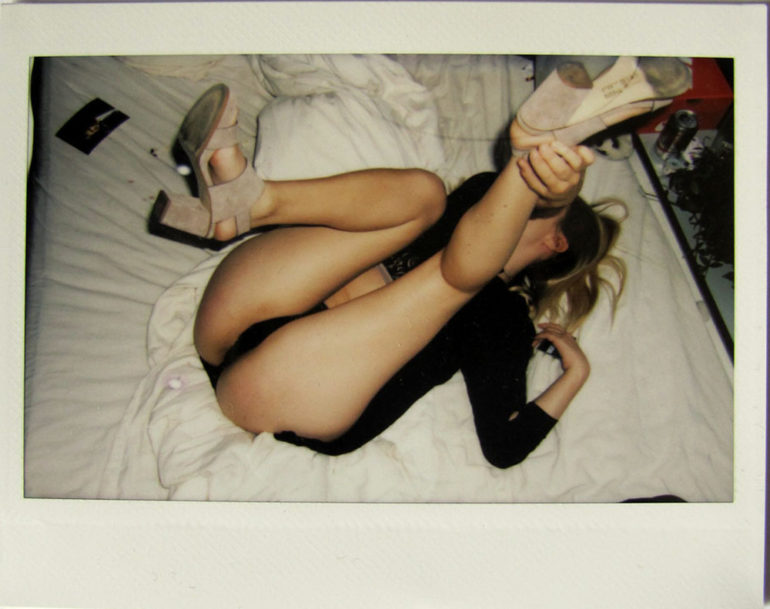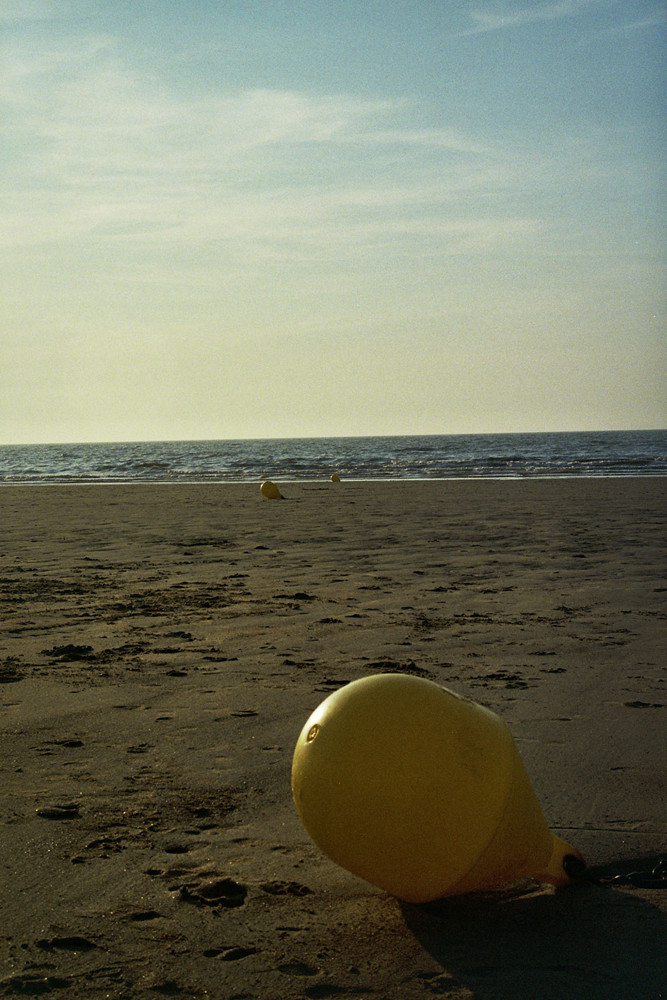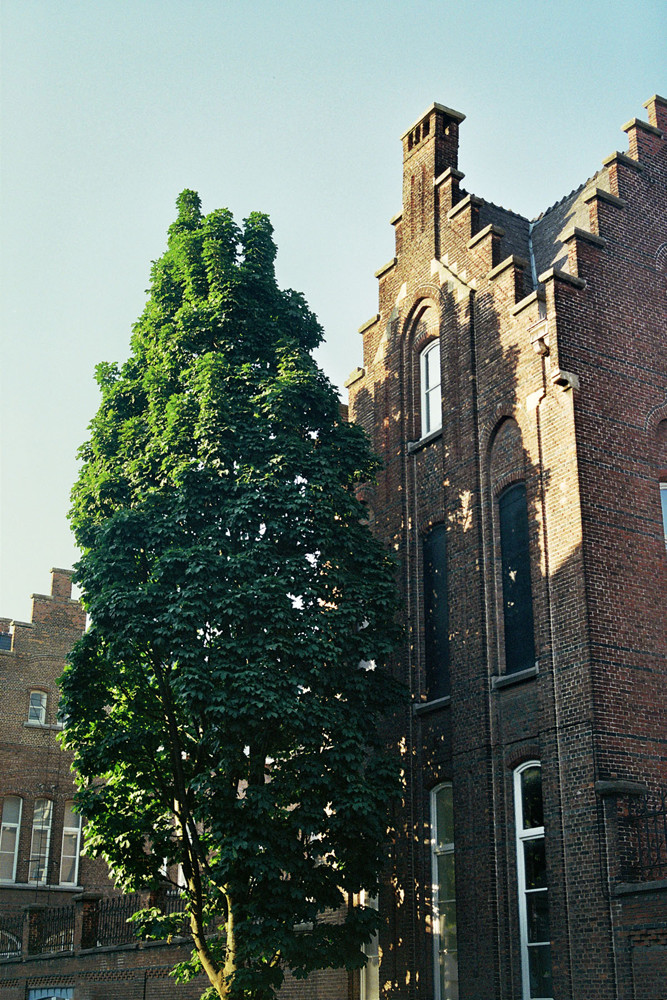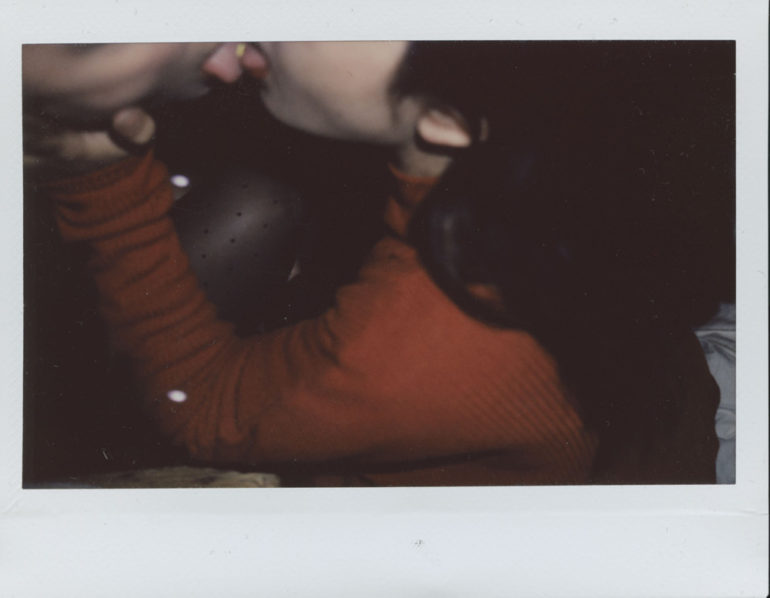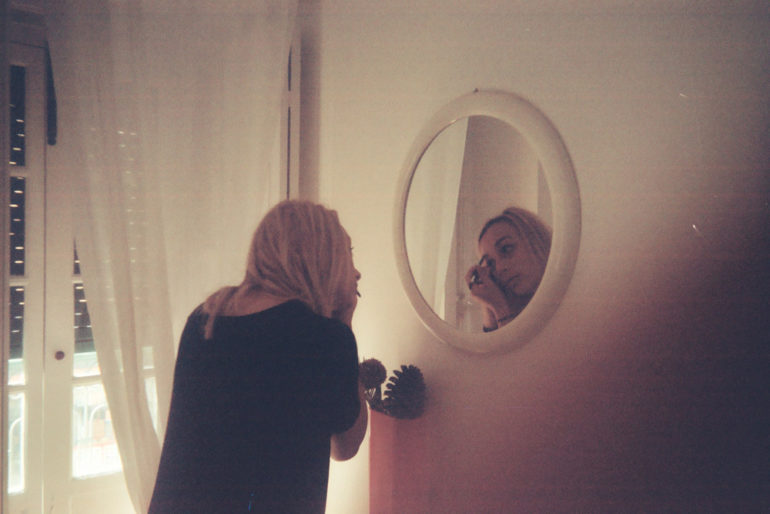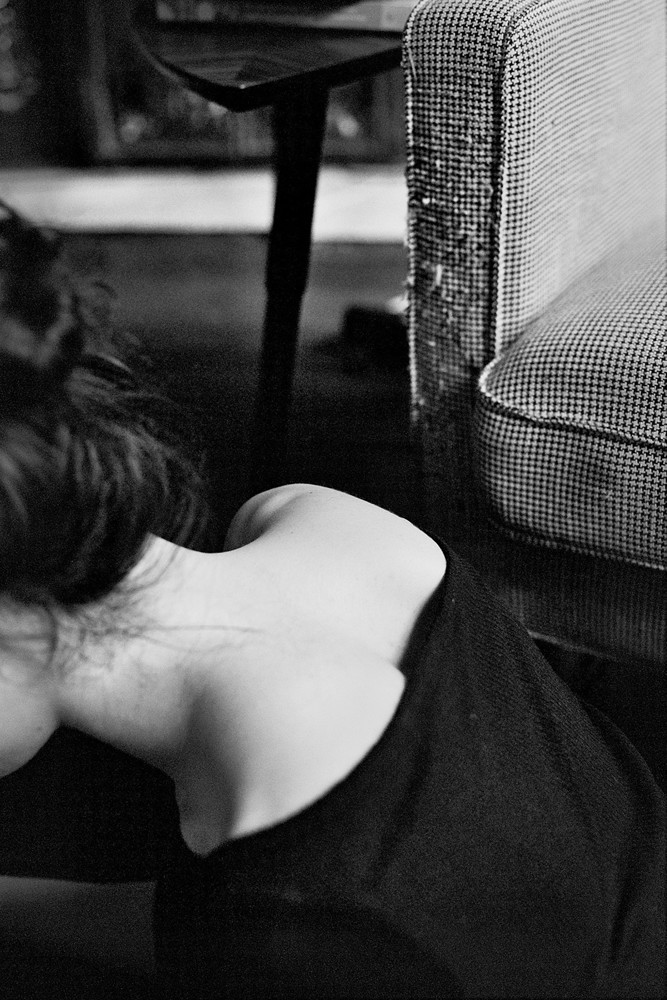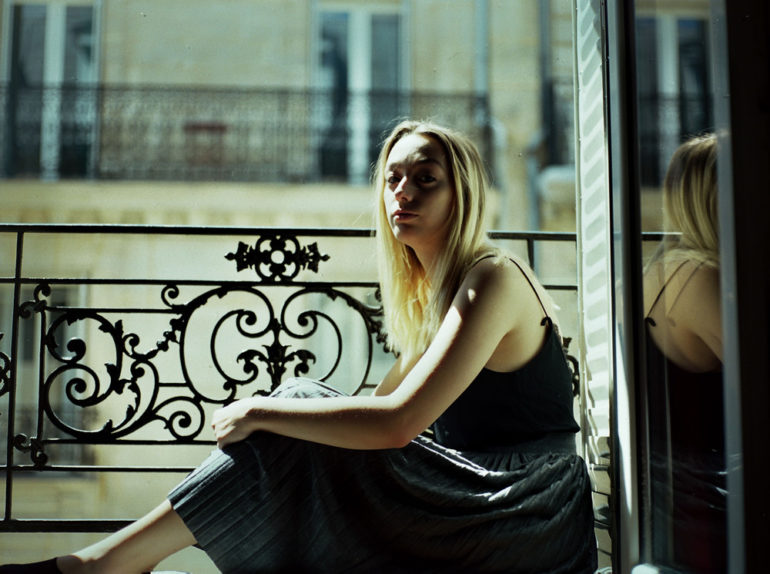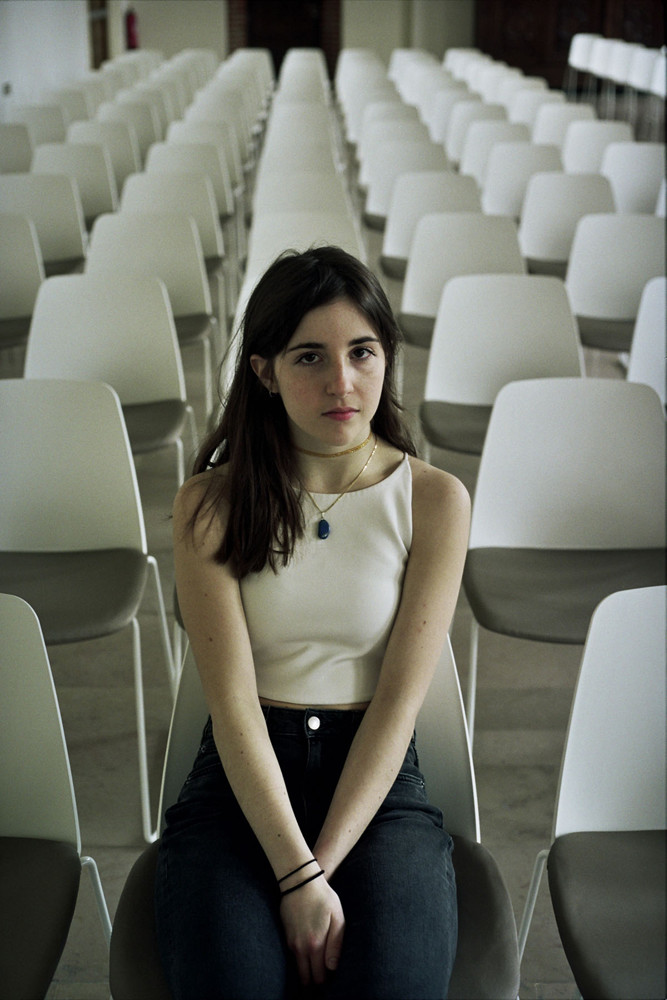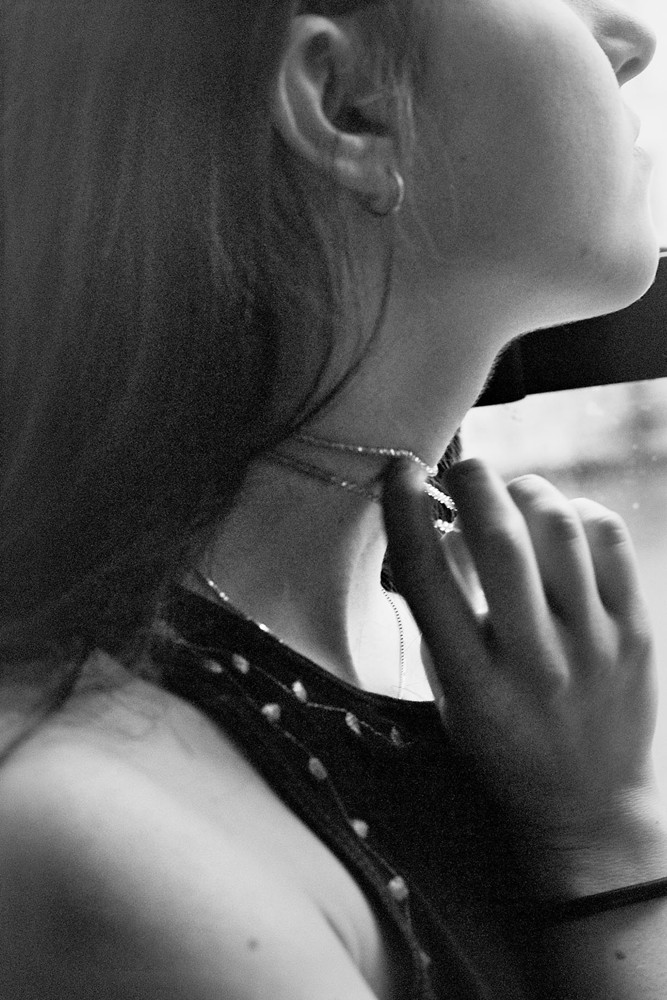Last Updated on 11/11/2021 by Chris Gampat
All images by Zeno Spyropoulos. Used with permission.
Zeno Spyropoulos is a photographer who has been working on portraiture for a while, but is also into analog means for a number of reasons. He’s very much against the Photoshopping trends, loves poetry, and involves emotions in his portraiture. All of this is clearly evident in a lot of the work Zeno does. Polaroids have always been looked at as something fun, simple and great for many moments in life. And as Zeno tells us, he’s finding ways to combine it with his love of poetry.
Phoblographer: Talk to us about how you got into photography.
Zeno: I used to write poetry way before I even picked up a camera. I used to get frustrated at times where I’d come across something that inspired me to write, to only have the diluted thoughts about that moment when I’d have time to sit down and write. Soon my little notebook where I scribbled in sentences or ideas had became a disposable camera. They were cheap initially and easy to work with so it was perfect for what I needed. The more I looked through its lens the more I was motivated to do other things with photography. I started to see poetry and stories in an image.
Phoblographer: What made you want to get into shooting instant film and Polaroids?
Zeno: I actually got an Instax Wide from a girlfriend of mine at the time because she noticed my little dabbles in photography from my use of disposables.
Instant film and disposable cameras were all I had for the longest time and eventually I learned to appreciate the format of it compared to other methods. Not everyone might agree, but I think there’s something unique about the format and aesthetic which instant film comes in. It hot wires us to think the relationship between photographer and subject much closer than it actually might be. I’ve also decided to start photographing my polaroids rather than scanning them in, because the subtle details of shadow, depth, light makes it look closer to how it’s meant to be seen, which ideally is in person.
“The reason I stick with analog is because I want to resist to this sort of “photoshop culture” that seems to be dominating fashion photography for instance. I’d like to be in a position where I could do portraits for a brand or company and show them that a photographer with talent and thought into his work will add more to the model showing off their products.”
Phoblographer: The majority of your work is portraiture. So what made you want to get into portraits?
Zeno: I guess being so heavily influenced by poetry my preference will always go to emotions, story and personality. The way that photographing people drives me I can’t recreate on anything else and I really try to aim for an image that displays well how I perceive that person to be. The process of doing a “shoot” with someone is for me is also great in the sense that I like to be social and like to meet people.
Phoblographer: Your work seems to be pretty unique in a subtle way where it seems like you’re creating images that more or less are you own blend. But which photographers are influencing you right now and what makes you like their work?
Zeno: The photograph of Willian Eggleston where he photographs the red haired girl laying on the grass with her camera next to her is one of my favourite works because I’ve known it for such a long time and absolutely love the colours and the story and subtlety it seems to bring. In his work in general you can see him play with light, shadows, colour in a similar way that I like working with.
A photographer who I recently discovered and adore is Ryan Plett, his portraits are something to aspire to, and his work has a sense of elegance much to what I look for in portraits too.
Phoblographer: Talk to us about the gear that you use. How do you feel it helps you with your creative vision?
Zeno: I only photograph analog, this be it disposable cameras, Instax wide or film on my canon ae-1 with varying film is used, but Kodak is my favourite. The reason I stick with analog is because I want to resist to this sort of “photoshop culture” that seems to be dominating fashion photography for instance. I’d like to be in a position where I could do portraits for a brand or company and show them that a photographer with talent and thought into his work will add more to the model showing off their products. People are desensitized to “hot” airbrushed models that all look the same, and showing a bit of personality and flaws will draw people more into paying the advert even any attention.
The Canon is my main tool for my portraits, which are taken outside with sunlight. It’s a good, light camera that seems to be unable to break no matter how much I throw it around. The constriction of only shooting film also means I’ll only take about 36 or even less pictures every time I meet up with someone for portraits. I think it really trained my eye and intuition because I can’t afford to be taking 100’s of photo’s hoping a good one between them.
The disposables are still my go to thing for street photography, but I recently purchased a compact camera (analogue of course) to make it a bit more affordable.
The instax photos are usually at my home because the instax wide is hefty and bulky thing I wouldn’t want to be carrying around too much. The funny thing is that I dropped my instax so much that it lets in a little light and leaves marks on my photo’s but I actually don’t mind, in matter of fact I actually enjoy the errors in the image.
Phoblographer: Tell us about your portrait photography process? Is there storyboarding or something like that involved?
Zeno: Not necessarily a story boarding but I’ll think of a cool or interesting location where I could photograph someone and usually casually invite that person to come hang out with me for an hour or two. Just chatting, getting to know each other so my portraits will also be good representations of that person. Lot of the people I photograph are either amateurs or beginning models, so I think it helps them be at easy with me and the camera.
The only real guidelines I have is tell them what sort of clothes to wear, what colour. Usually ask not to wear or wear too much make-up, since that would go against my problem with “photoshop culture” which I mentioned earlier.
Phoblographer: How do you communicate with your subjects?
Zeno: Like I mentioned earlier, I sort of make it more of a casual hang out, rather than someone coming just for a photoshoot. For a lot of the people I work with that aren’t used to being photographer this lowers the pressure and the barrier that there might be in the beginning. And I also have fun with meeting people, sort of just hang out. I’d walk around and slightly instruct them what to do or tell them to stay how they are so I can take a shot. I think me shooting analogue also helps in the fact that there’s only 36 shots on a film roll so 36 pictures in maybe one or two hours is more than enough to get inspired.
Phoblographer: You seem to work a lot (though no exclusively) with natural lighting but the lighting is still very specific. So how do you go about putting together these images and how do you tend to work with light?
Zeno: A sunny day is the best day for me, which isn’t easy because where I live in Belgium there’s not that many of those days. A lot of times contrast and shadows inspire me for my shots. If I see the sun coming through trees or it falls on a specific way I’ll usually take a shot. I’m also not afraid to let shadows partly cover or even cover the face and with the 36 shots analogue allows me to take I’ve trained myself instinctively to find the right shot.
The polaroid is a different story however, most of the times I take these with direct flash in dark environments, It would give you the feeling of being a voyeur in something I experienced and I think people in general, whether it be tv, internet or art like to take a peek in someone’s life. So this instant photo almost seems like something that a person would take for himself and not necessarily to share.
Phoblographer: To you personally, what makes for a great portrait?
Zeno: It’s hard to say, but when I choose between which of my photos are the best after the shoot I just look for the ones that match their personality and order them in a way that can create a short story. I don’t force this story upon people, they can take out of it what they want but the tools are there. Obviously when I see other people’s portraits I don’t know what they are like, but the photographer is than responsible of portraying how the photo and person comes across. Portraits that usually catch my eye with unique lighting, a model that has a unique or distinct something which is how I usually choose the people I work with too.
Phoblographer: You’ve been working on combining poetry and photography together. Why? How do you feel that it helps you creatively express yourself?
Zeno: My background in poetry and a need for context affects my photo’s more than I realise at the time. I like my photo’s to convey an emotion. A feeling. Much like the poetry I write. From time to time I try to experiment with combining the mediums in a more blatant way but I haven’t found a specific way where I am confident it is best.
I just think they are two passions of mine, who influence each other a lot so naturally I’d try to work with both.
Phoblographer: Tell us about the poetry and photography book?
Zeno: Well I recently released my first poetry book. So far the only photography it includes is the cover design which is a photo of mine. I do love book format for photography and I’m definitely interested in making photo books if I ever work on a longer project which most likely include poetry as well.
The book is about 45 pages of individual poems but set in a chronological order from over 3 years so it has an overarching story. These are mostly love poetry, and are written in a time of falling in love, cheating, regret. So I think It’s a good bundle in the sense that the entire book won’t hit you over the head with painful heartbreak, but also contains the gently sweetness of love. It’s currently on sale through this link.


